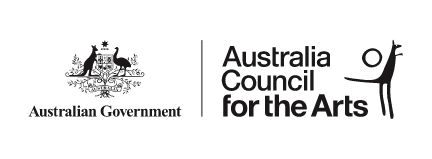




In 2021, the National Museum of Australia (NMA) commissioned me to create new ways for audiences to engage with its iconic Garden of Australian Dreams. The NMA’s commission offered a context to compose and house material I’d been unconsciously collecting and dreaming about since childhood.
The result is Breathing Space – a rewilding in sound.
Walking and listening are central to my life. Moving through landscapes and their soundscapes on foot is a way to think, to dream, and to quietly link inner and outer worlds.
Breathing Space emerged from years of walking and listening to the staggering sound library of the natural world, particularly during Melbourne’s long Covid lockdowns, when human din gave way to the acoustic detail of the living realm that surrounds us. My friend Alexis Wright, a member of the Waanyi Nation of the Gulf of Carpentaria, was an early counsel, generously offering rich conversations, and profound texts for inspiration and orientation. Ruth Little and I distilled her remarkable essay ‘Thinking about Writing Climate Change Fiction’ into a series of short texts, which became the spine of Breathing Space.
Breathing Space is an oasis of quiet reverberations, revealing the calls, tremulations and deep stirrings of country. The composition is vast, in response to the epic continent of Australia. It comprises multiple musical pieces of different durations, all orbiting one another at different rates, re-aligning only once a year. It summons the miraculous and precious biological and human diversity of this ancient land. It’s a gently, constantly shifting sound world, inviting visitors to experience its many seasons.
Six areas of the Garden pulse with human and other-than-human sounds. In the Garden’s central field, all the vibrations converge and disperse in undulating drifts of sound. Breathing Space fills the site with choruses of frogs, cicadas, and ethereal instrumental and vocal phrases. The life and breath of these exquisite sounds brings shimmer and shift to a symbolic space, transporting listeners to wild landscapes of their own imaginations.
The work was made with many contributors: a core creative team of 12, alongside 21 musicians playing or singing newly composed material, 12 sound artists, and a chorus of 32 voices speaking the powerful words of Alexis Wright. Alexis’s poetic call to listening and country, and the sung and spoken voice of Yorta Yorta Dja Dja Wurrung artist and leader Dr Lou Bennett are central to Breathing Space.
Breathing Space is now freely open to the public permanently at NMA in Canberra, 9am-5pm every day apart from Christmas Day.
We’ve also released an album called Breathing Space, an evocation of the long-form work at the museum. It's out on ABC Classics, and can also be found on any streaming service. Perhaps the album will inspire a visit to the National Museum of Australia to experience the installation in situ. It might move you to go for a walk in your neighbourhood, and so discover its sonic environment. Or maybe it will take you on an inward migration, deep into the terrain of your own dreams.




